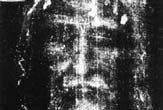New Shroud of Turin Evidence: A Closer Look

An Italian scientist and his team claim to have replicated the Shroud of Turin, believed by many to be the burial cloth of Jesus. Luigi Garlaschelli, a professor of chemistry at the University of Pavia, used linen identical to that on the famous shroud, made an impression over a volunteer's face and body, and artificially aged the cloth with heat.
The result is a fabricated shroud that very closely resembles the Shroud of Turin, made with materials and tools available at the time of the shroud's origin. Garlaschelli's reproduction won't, of course, satisfy the true believers. Nor (despite headlines to the contrary) does it conclusively prove that the Shroud of Turin is a fake. It does, however, disprove a claim almost as important: that the image on the shroud is scientifically unexplainable, and could not have been made by human hands.
Of course, just because the Shroud of Turin could have been faked doesn't mean that it was faked. To cast real doubt on the cloth's authenticity, there would have to be other reasons--some corroborative evidence--to think the shroud is a forgery.
In fact, the shroud had previously been carbon dated not to the time of Christ but instead to the 14th century---perhaps not coincidentally about the time when the first record of the burial cloth appears. If the Turin Shroud really is the most important holy relic in history, it seems odd that no one knew of its existence for 1,300 years.
There's another very good reason to suspect that the Shroud of Turin is a fake: the forger admitted it. As Joe Nickell, author of "Relics of the Christ," noted, a document by "Bishop Pierre d'Arcis claimed that the shroud had been 'cunningly painted,' a fact 'attested by the artist who painted it.'" Not only did Bishop d'Arcis attest to knowing that the shroud was a fake in 1390, but even Pope Clement acknowledged the forgery. (The Catholic Church does not officially endorse the shroud as authentic.)
The debate over the Shroud of Turin shows no signs of abating, but Garlaschelli's Shroud of Pavia debunks another claim for its authenticity.
Benjamin Radford is managing editor of the Skeptical Inquirer science magazine. His books, films, and other projects can be found on his website. His Bad Science column appears regularly on LiveScience.
Sign up for the Live Science daily newsletter now
Get the world’s most fascinating discoveries delivered straight to your inbox.












